Here I find myself in a cosy cabin on the coast of Senja, a strikingly beautiful island in the Arctic Circle in northern Norway. It’s a cold night in mid-October, clouding over after a stunning sunset, with an icy wind springing up outside.
Sunset over Steinfjorden this afternoon:
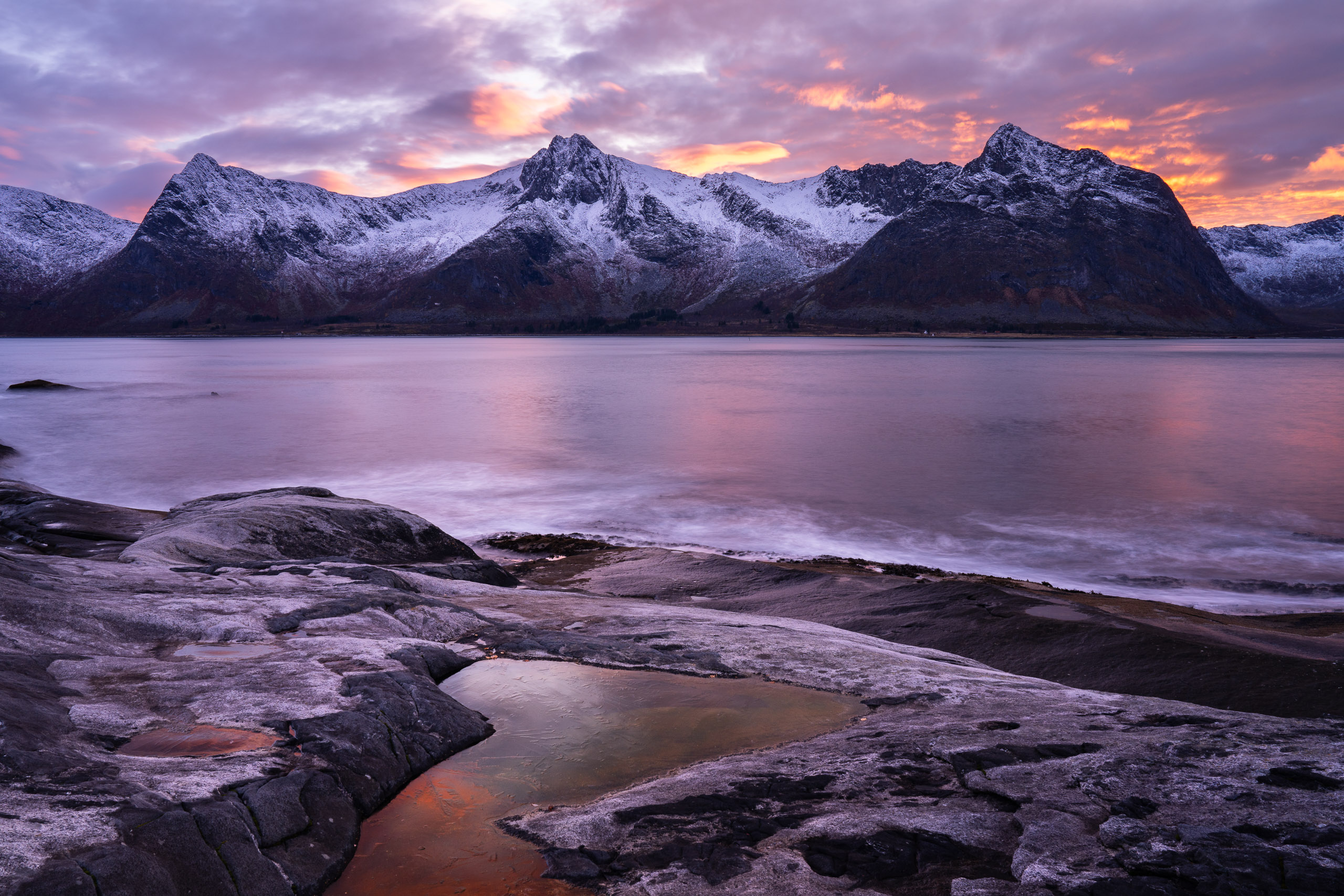
Last night was a bit of a late one, so I’m happy to sit this one out and collect my thoughts by a toasty wood fire. As I reflect on my week in Senja I’m resigned to the fact there will have only been one clear night during my time here. That clear night came last night, and thankfully it’s left me with stories to tell.
Planning was underway back in February when flights were booked to Bardufoss, plus accommodation on the northwest coast of Senja. I was drawn to the harsh beauty of this island, where razor sharp mountains rise abruptly out of the sea, and the aurora borealis ignites the night sky.
I first made my acquaintance with the aurora four years ago in Tromsø, not far from here. That was an excellent introduction, but I left with unfinished business. Being reliant on group northern lights tours, with no control over locations and limited time for dedicated photography I was left wanting more.
Several things were different this time around.
My trip in 2019 was at the minimum point of the 11-year cycle of sunspot activity. 2023 is towards the peak, so there’s a higher likelihood of more regular and brighter auroral activity.
This time the moon phase worked in my favour too. I’ve struck a new moon, so the stars and aurora will appear brighter against a dark sky.
On the equipment side, I have a faster and wider lens in my kit, the Sony FE 14mm f/1.8 GM. Aside from the optical quality, the lens weighs in a just 460 grams, making it perfect for traveling light.
I’ve also found the most idyllic place to stay, right on the spot at a spectacular vantage point at Tungeneset. I’ve given myself every chance to be in the right place at the right time, but still fully at the mercy of the local weather. The essential ingredient is clear sky, by no means guaranteed on the coast at this time of year; and of course, this has to align with some level of solar activity.
About last night …
From the cabin it’s barely a 2-minute walk to the Tungeneset viewpoint on the Fv 862, part of the Norwegian Scenic Route Senja. I have the indulgence of a glass room overlooking the waters of Steinfjorden and out to sea, with a clear view of the sky from inside. With all the lights out, I was prepared to wait all night for the slightest glimpse of the aurora. Camera bag, tripod, warm outer layers, gloves, head torch, etc were all ready to go at a moment’s notice.
It turned out to be a very short wait. Just after 8pm an unmistakeable band of light appeared out of nowhere, high in the sky, and clearly visible to the naked eye. The moment I had dared not to expect was really happening, but would it last? It was time to run, literally!
During the 200-metre dash and few minutes of setup, the aurora was forming a breathtaking panoramic arc directly overhead, stretching from one horizon to the other. Before long the light was gracefully reaching down in every direction. Imagine a slow motion but eerily silent firework.
Conditions were absolutely made to order. After a sunny day, the rocks around the viewpoint were dry and safe enough to negotiate in the dark. There was no breeze to shake the camera during long exposures, comfortable temperatures just above zero degrees Celsius, no moon, and not a cloud in the sky.
In 2019 I’d only seen green aurora, which was still mighty spectacular. But this time I was treated to a rare full gamut of bright red, pink, purple, and blue, complete with reflections in the calm waters of the fjord.
To the south and west my compositions overlooked the water of Steinfjorden, with a row of snow-covered peaks including Nonshaugen, Husfjellet, Skinnarmen and Traelen forming an enchanting backdrop:
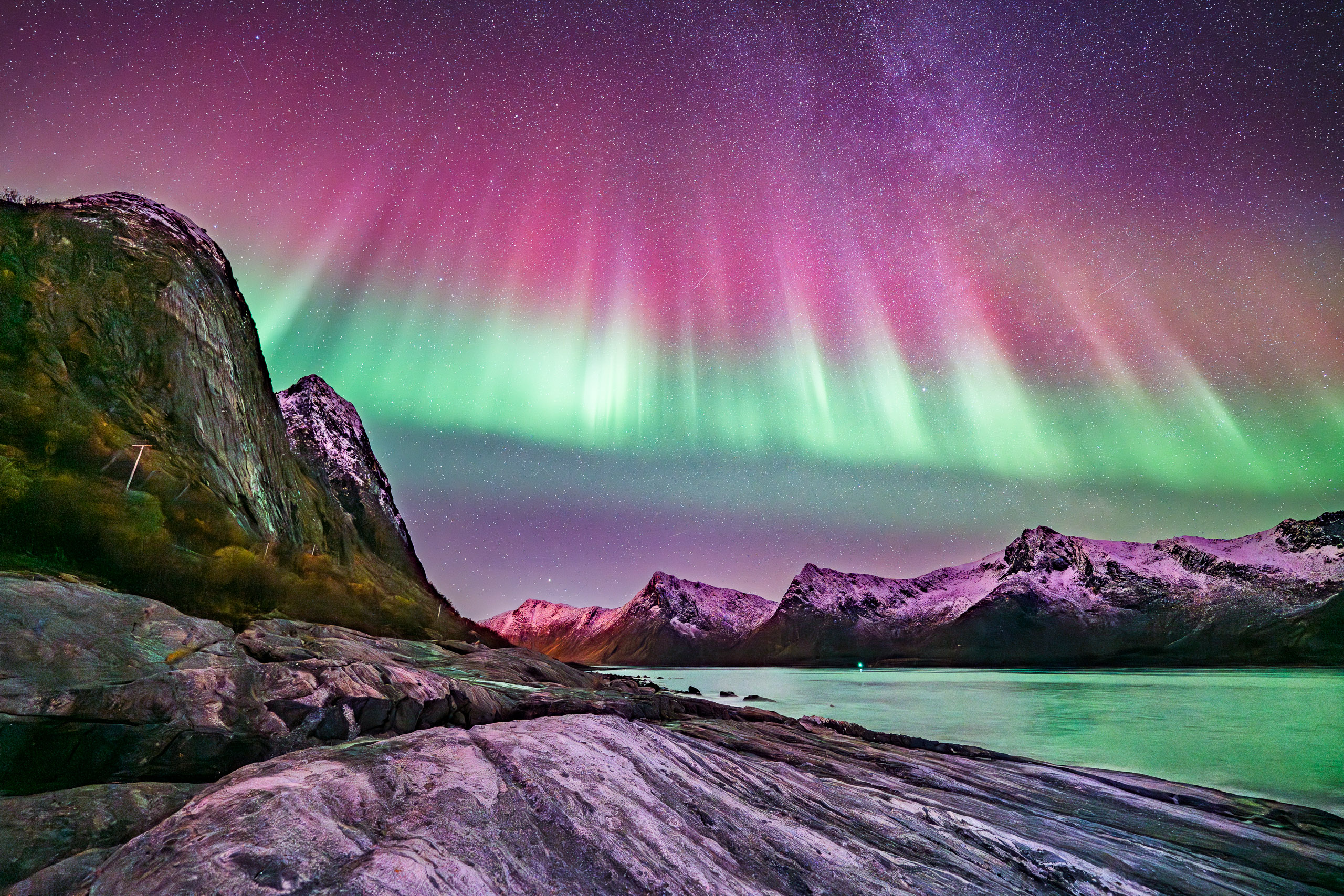
The most magical scenery was looking northwards to the jagged peaks of the Okshornan mountain range, also called ‘Devil’s Jaw’ or ‘Devil’s Teeth’; quite out of this world with curtains of light draped above:
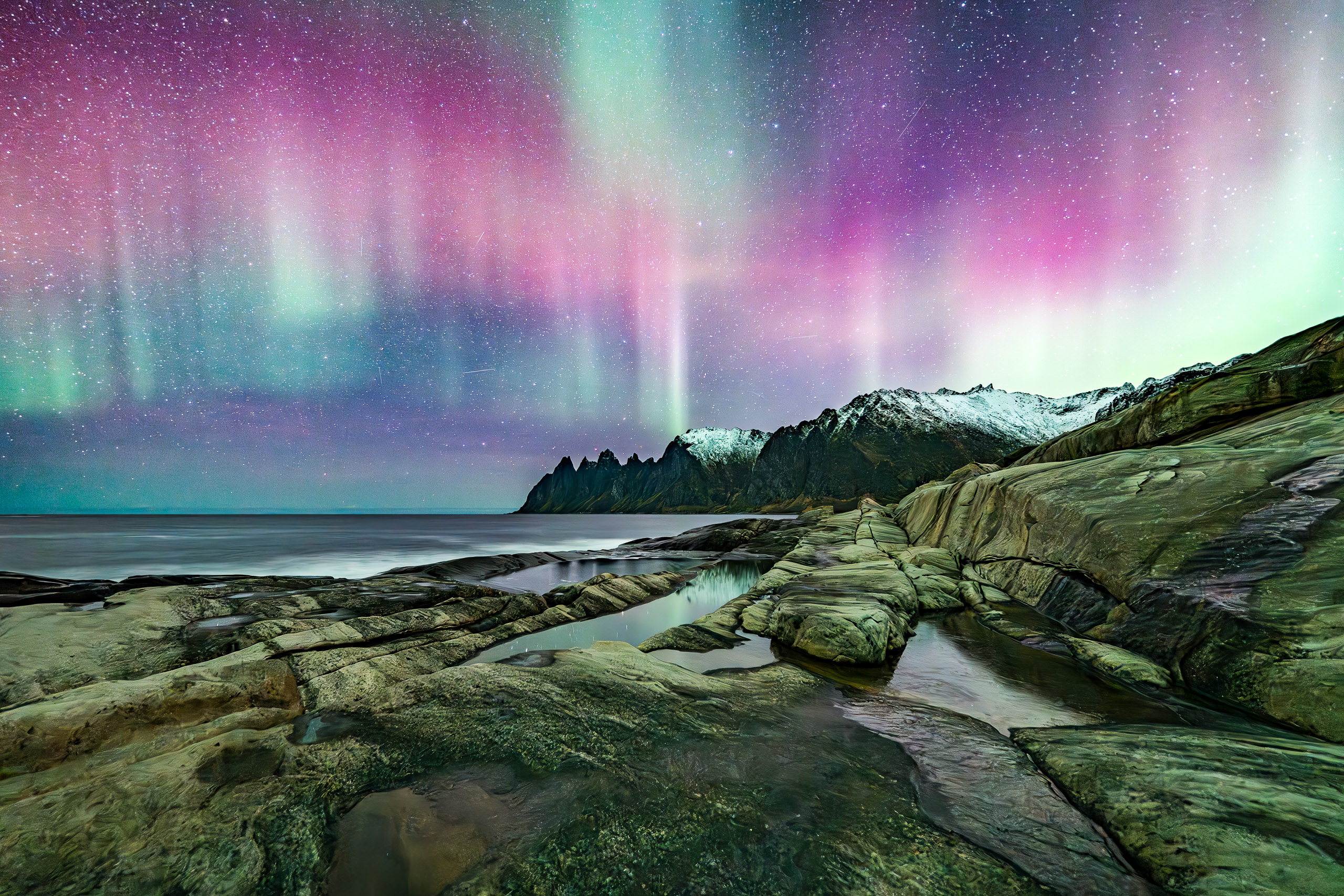
Being the darkest of nights I kept the lens wide open at f/1.8, aiming to keep my exposures as short as possible. For the most part I settled on ISO 1600. I was getting exposures around 6-8 seconds for the brightest aurora, a reasonable amount of time to freeze the flow of the dancing light.
A handful of other photographers had rolled up to the enjoy the show. We were well spread out, so it was sociable enough to try some dim light painting with the head torch, adding a subtle touch of brightness to some of my foregrounds.
Many shots just had to be framed in portrait orientation to capture the scale of the expansive overhead display. Hyper care was taken to regularly check that I hadn’t disturbed the manual focus after handling the camera. The quickest focus method was to pick a bright star, focus to infinity and wind back a fraction until the star was pin-sharp. Being wide at 14mm, and with no super close objects in the foreground, there was not too much issue with front to back sharpness.
From the outset I zoned into a concentrated photography mindset, after all I’d journeyed from the antipodes for this experience and wanted to make every second count. But it was equally important to forget about the camera every so often, take some deep breaths, and allow the awesome spirit of this place to soak in.
Time inevitably flies in these situations. It was 2am before I knew it, I’d captured 800+ images, and I was ready to pack up despite the ongoing auroral activity. Aside from some overnight campers I was the last one to leave, feeling euphoric but also starting to feel the cold after the most incredible 6 hours.
This had been very special … by no means an average night. My wildest expectations had been surpassed, and the thought even occurred that the northern lights could be crossed off my bucket-list – been there, done that! The spectacle of this night will be difficult to replicate.
But you know what? There’s something infectious about the aurora. Deep down I think I’ll be forever under its magnetic spell, and we’re likely to cross paths again one cold, starry night.
4 weeks later:
Back in Sydney now, a few weeks on from ‘that night’! Needless to say, that SD card has been locked and safely stowed away ever since. It’s been a patient wait to finally see the results on the big monitor.
My initial process was to denoise the files using Adobe Lightroom’s latest update. I did try some other noise reduction applications, but for these images at least, LR gave the best results, very quick and clean without compromising on too much fine detail. Finishing touches were also added in Lightroom.
No words are sufficient to describe this incredible experience, so without any further ado, here are the rest of the pics!
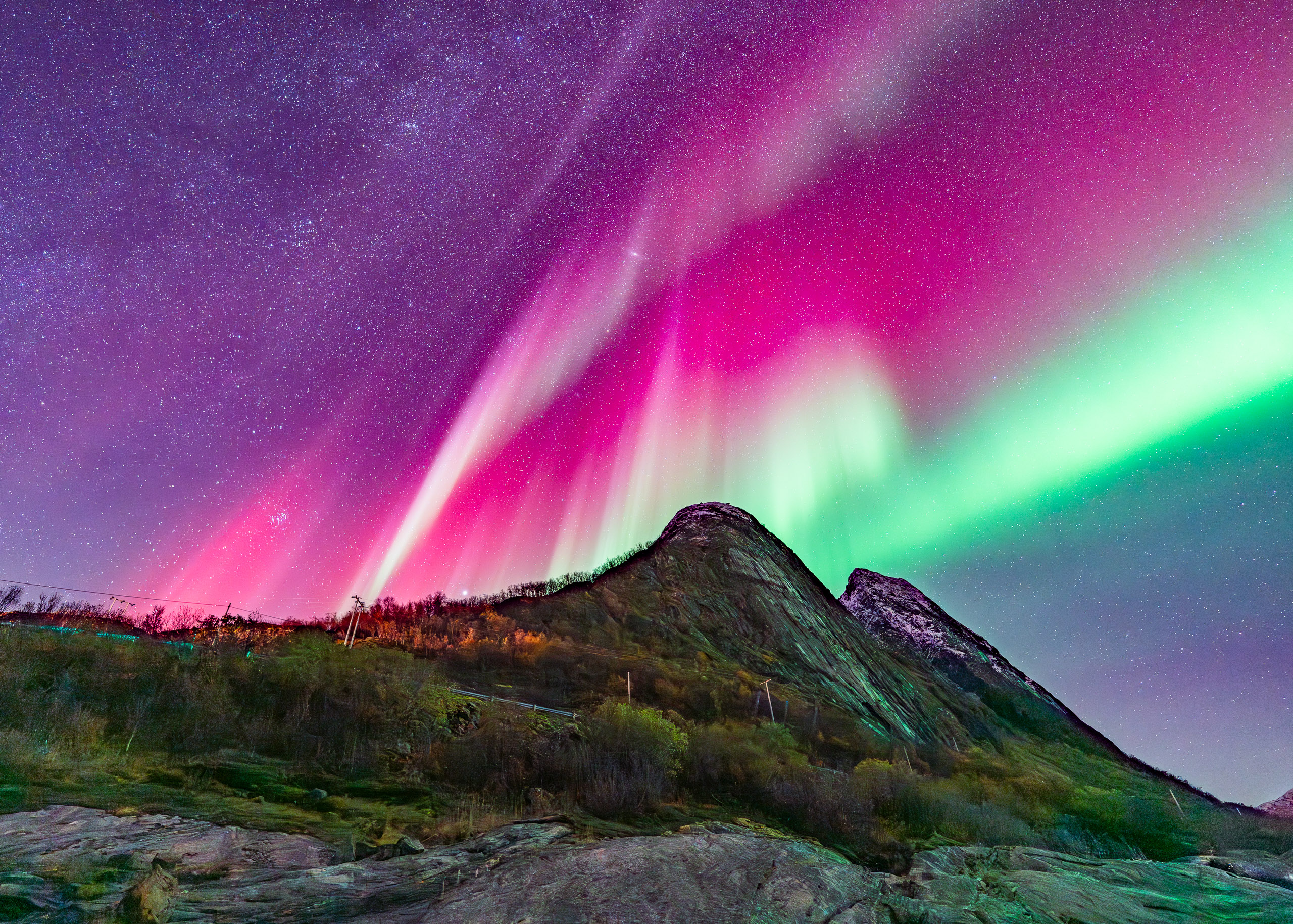
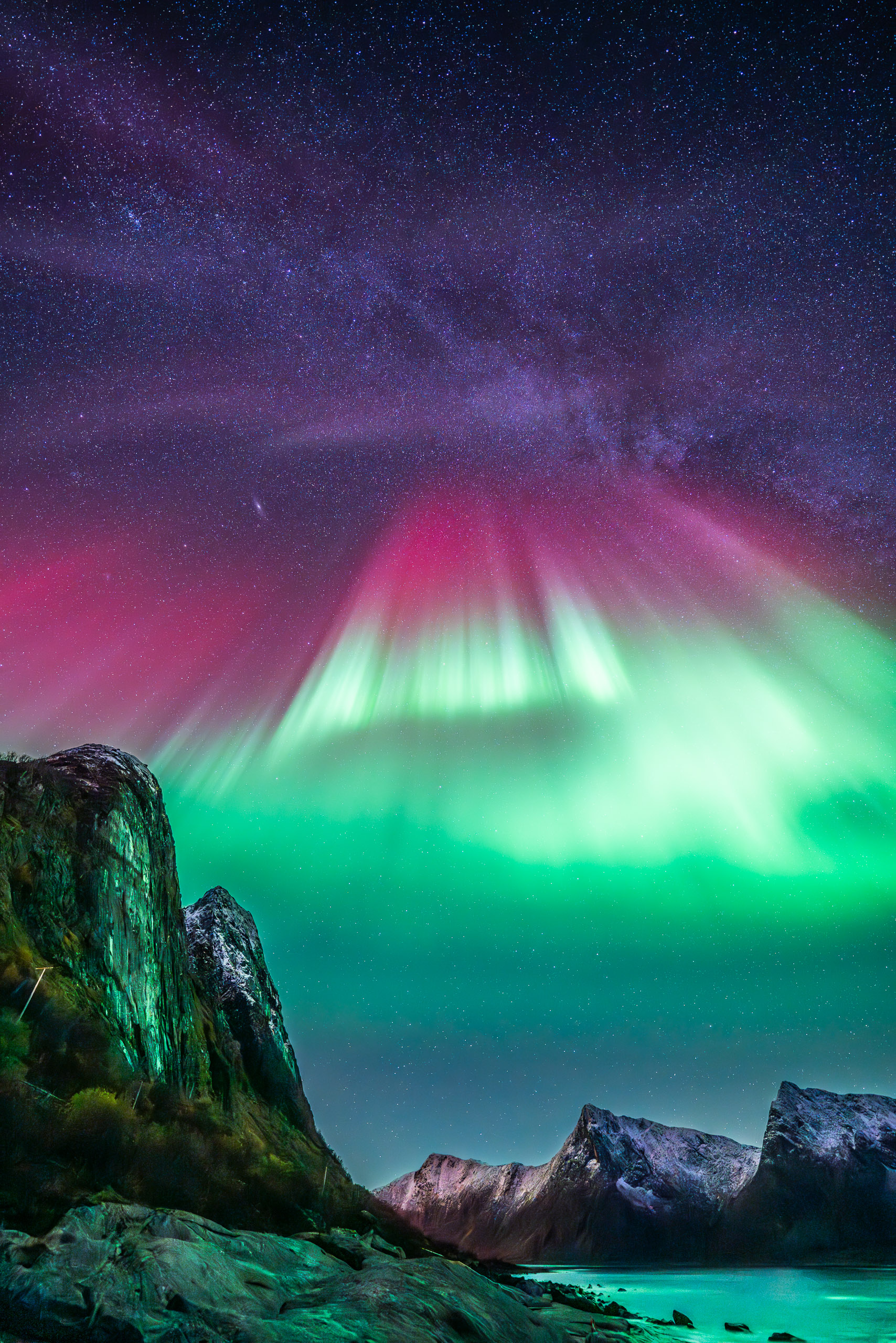
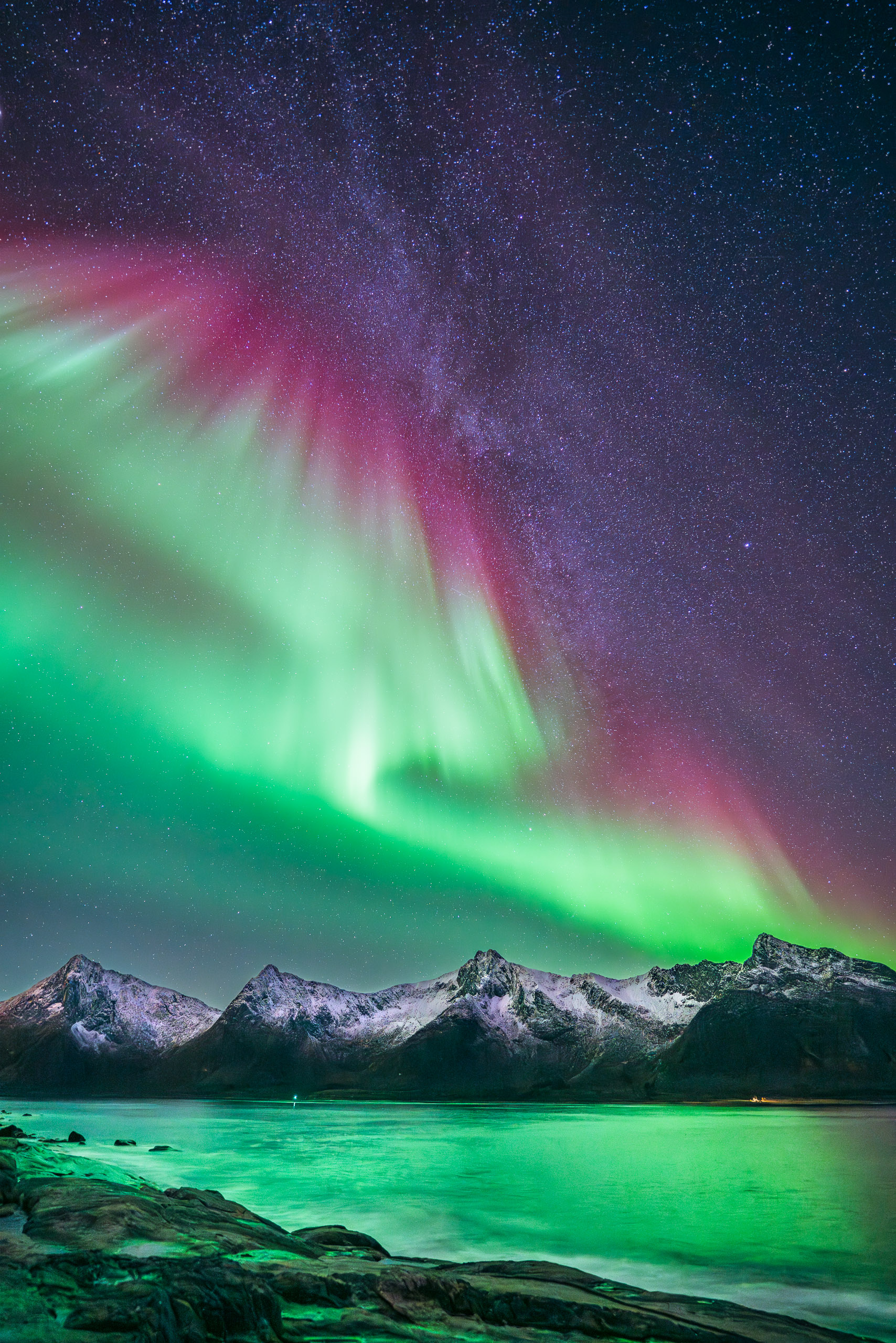
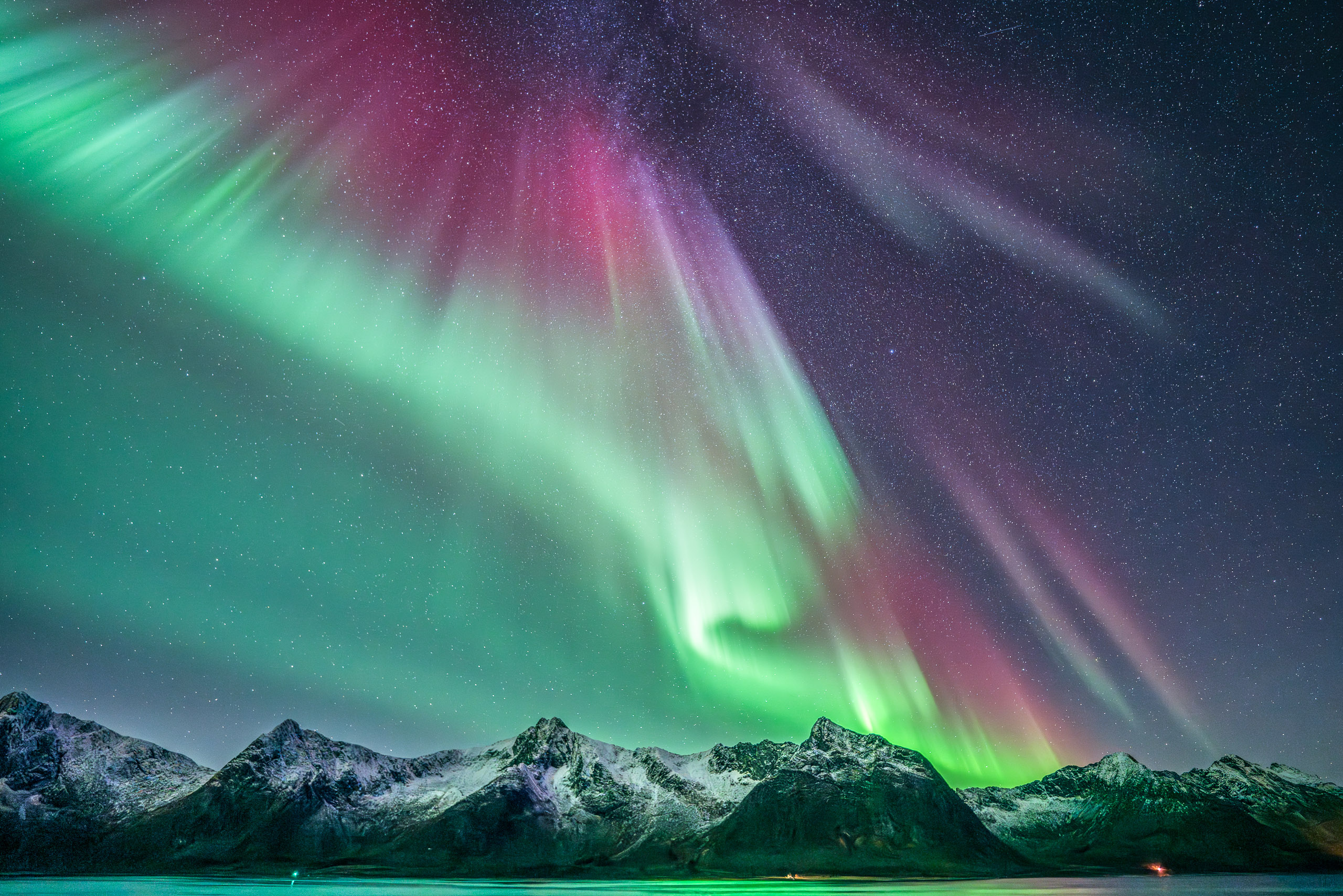
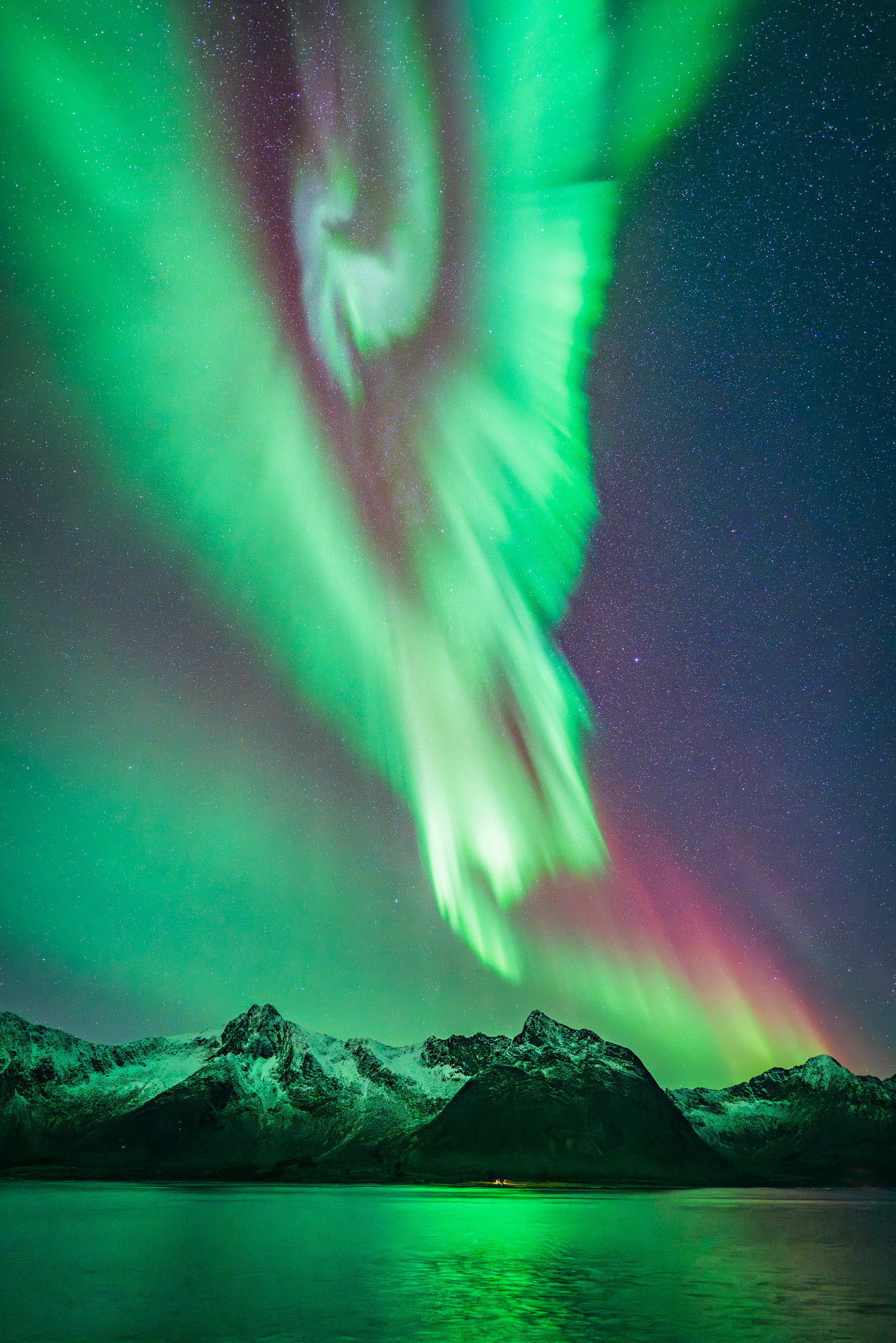
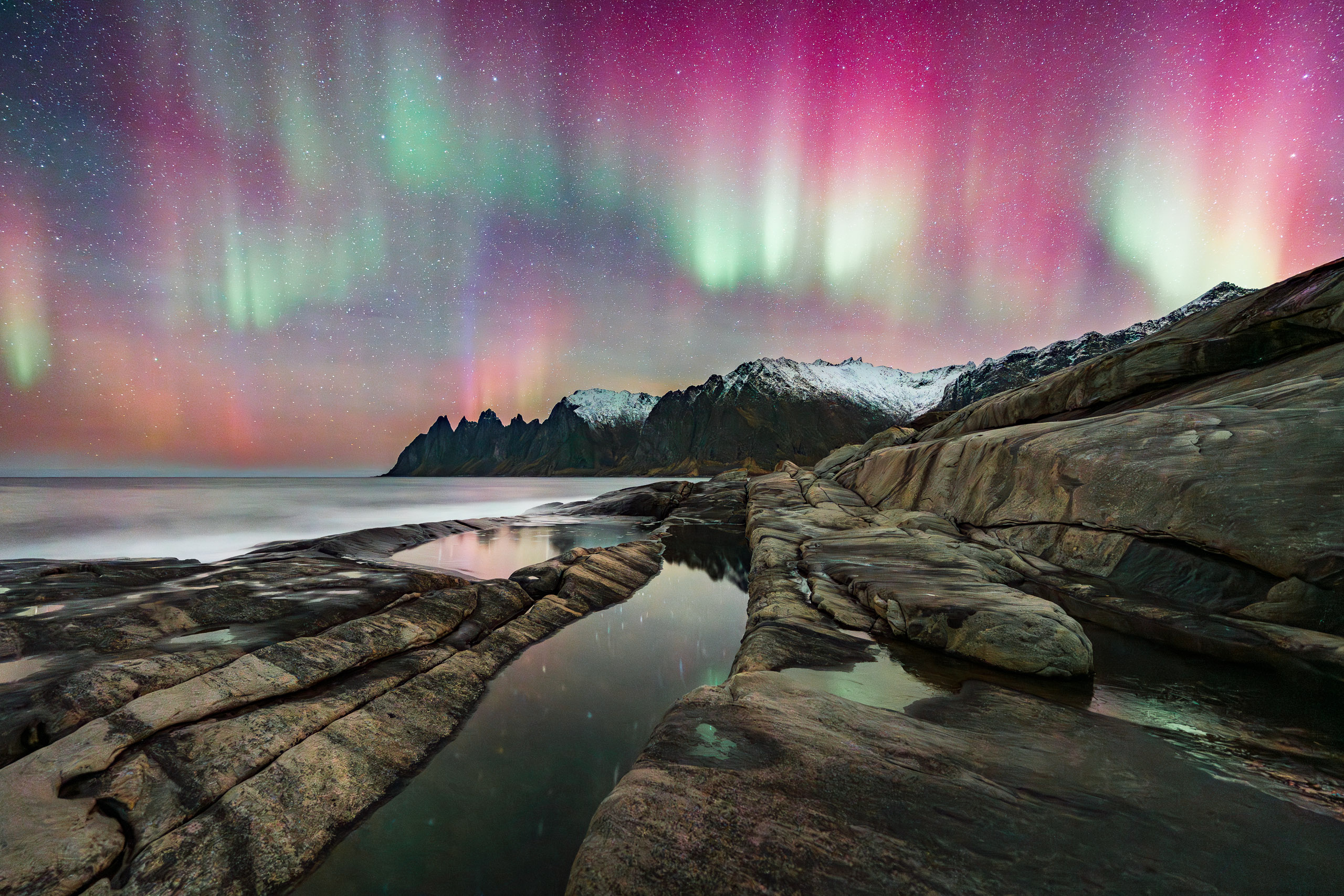
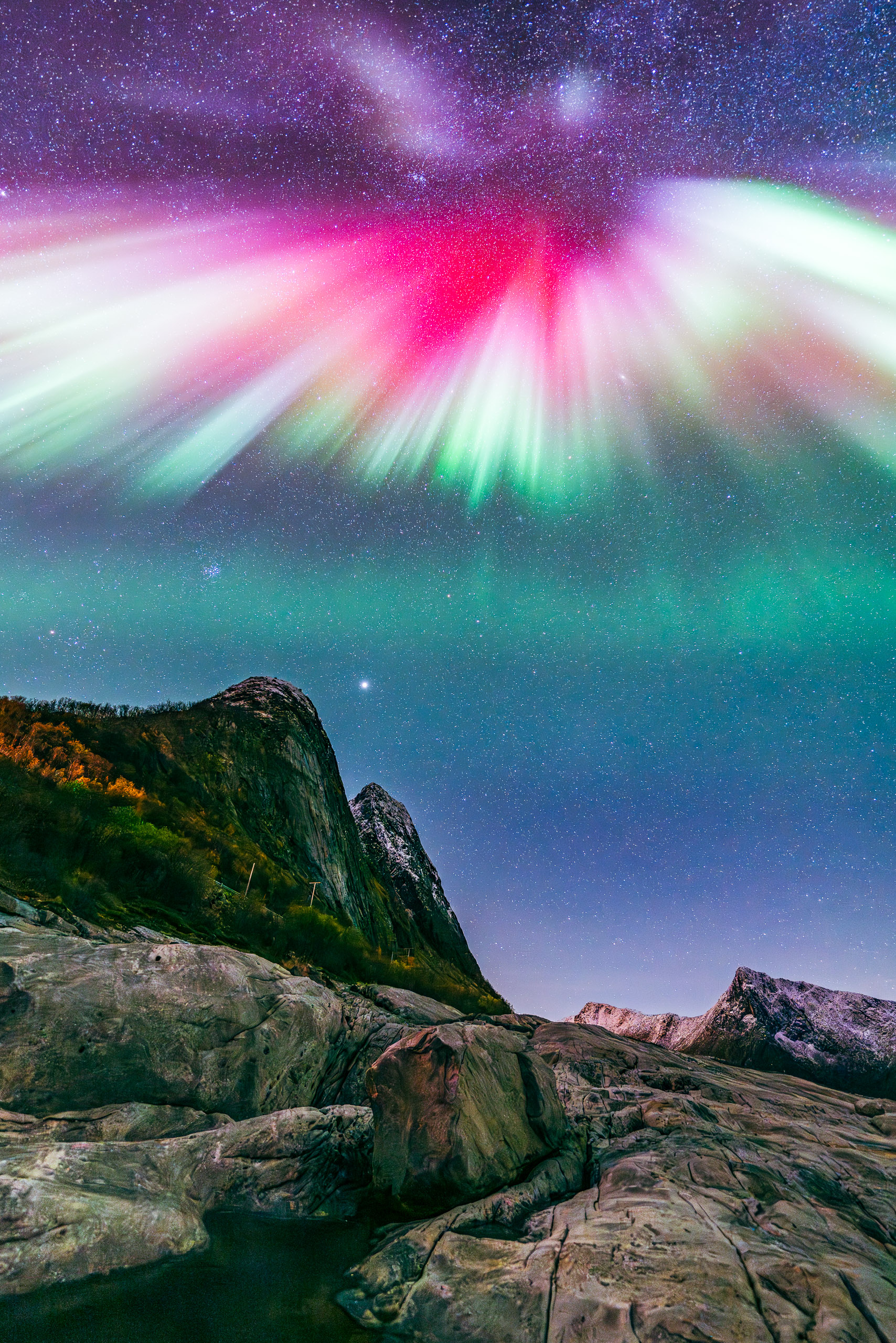
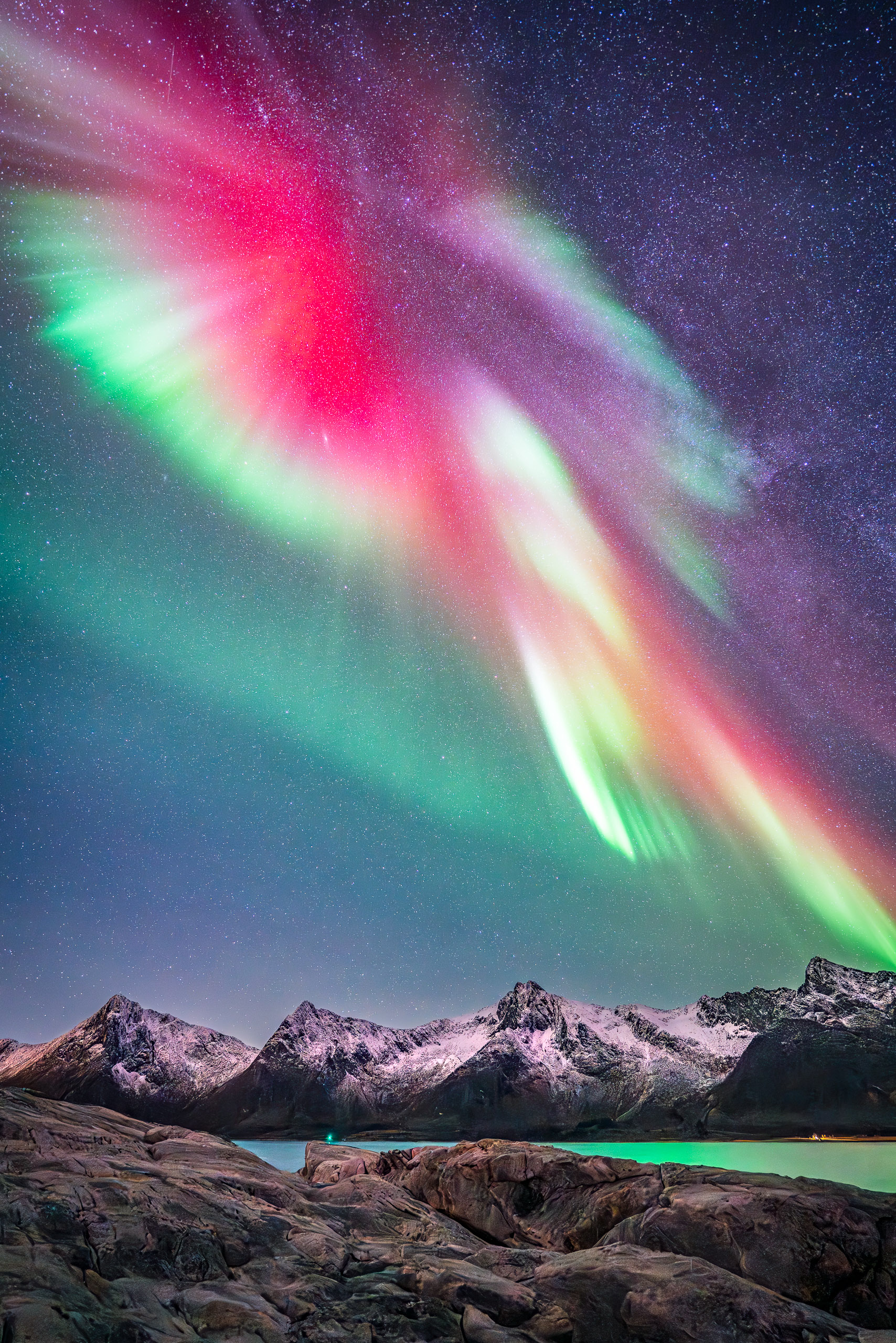
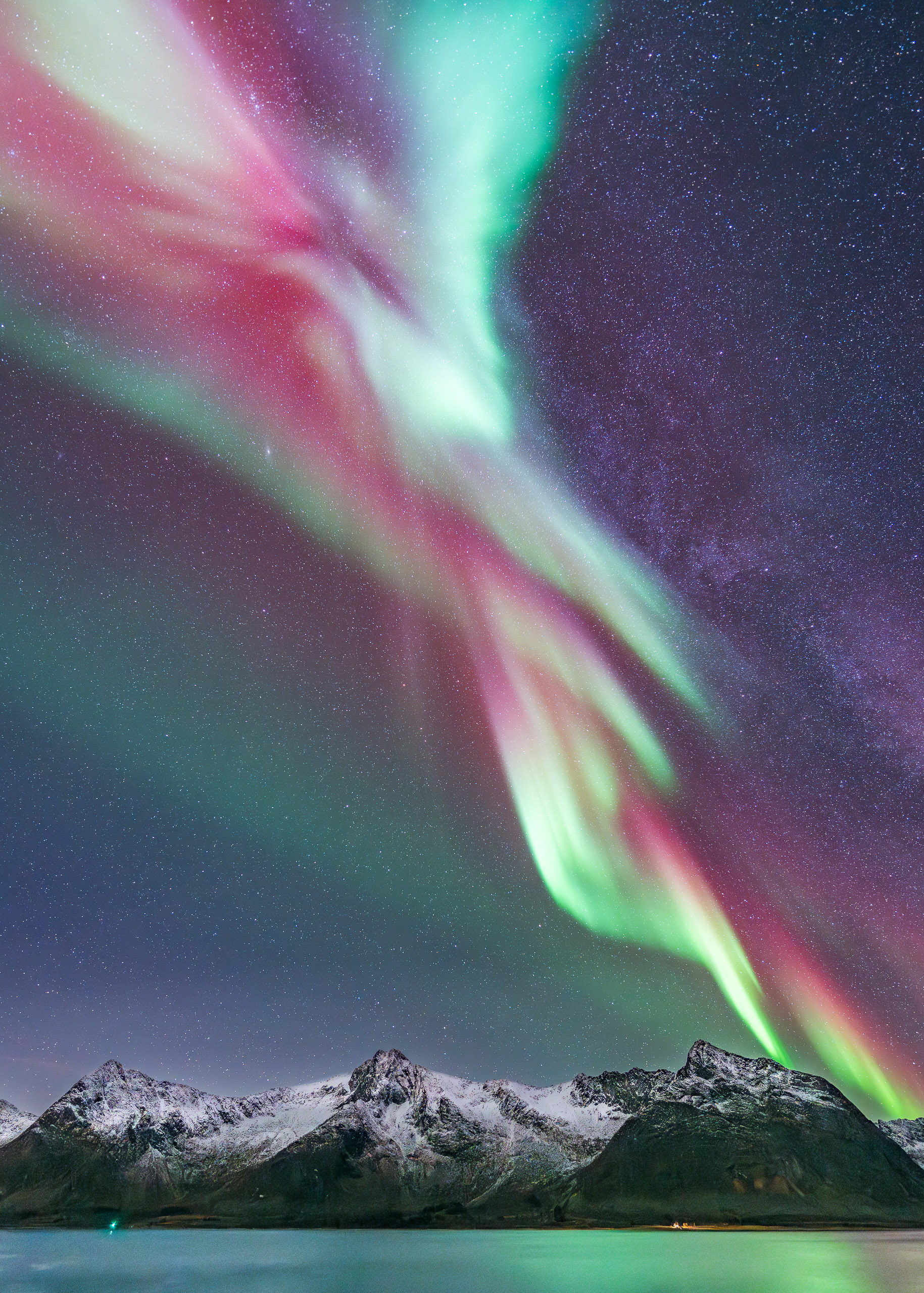

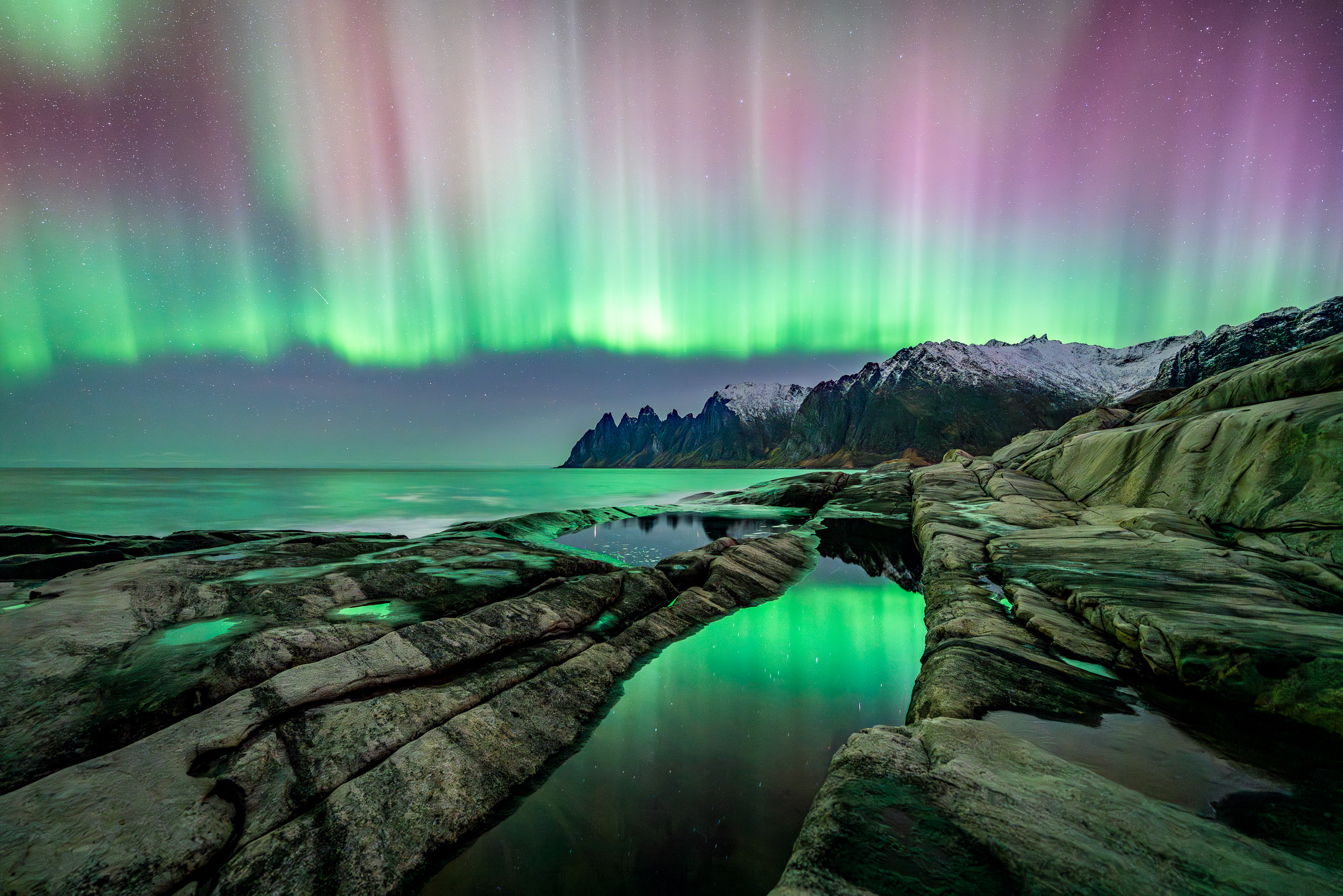
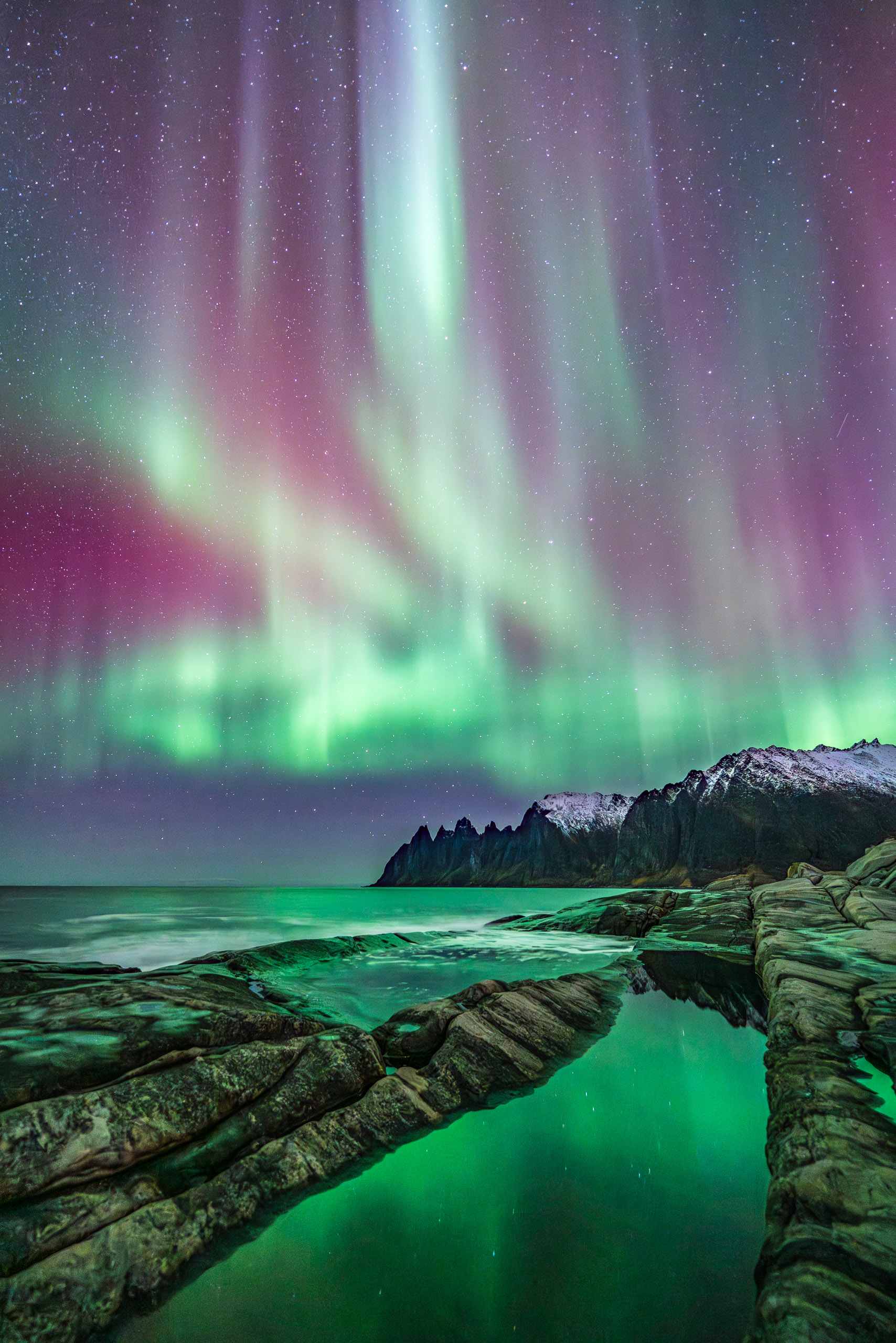
Images featured in this story were captured in October 2023. Equipment: Sony a7R III + Sony FE 14mm f/1.8 GM.





